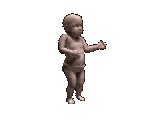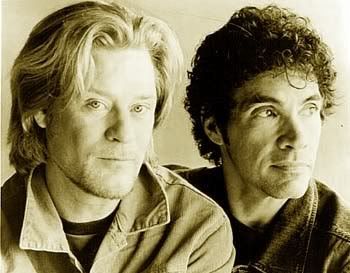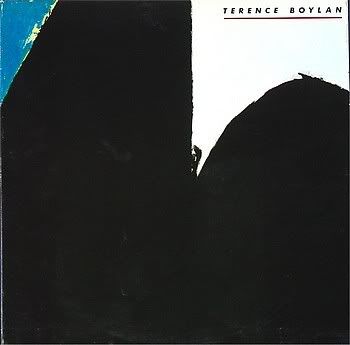
Susan Tedeschi - Hope & Desire - 2005 - Verve Forecast
Massachusetts-based blues singer Susan Tedeschi lends her beautiful bluesy soulful voice to a list of songs by some of the greatest songwriters of all time, including a great version of the Rolling Stones' "You Got the Silver" and a terrific interpretation of Bob Dylan's "Lord Protect My Child." Here, Susan is aided by her husband, Derek Trucks, and guitarist Doyle Bramhall II (Eric Clapton) and also the Blind Boys of Alabama. A great recording. You should buy her brilliant " Just Won't Burn " album.
TRACKS
01 You Got the Silver (Jagger, Richards)
02 Soul of a Man (Sain)
03 Lord Protect My Child (Dylan)
04 Tired of My Tears (Holiday, Lewis)
05 Share Your Love with Me (Braggs, Malone)
06 Evidence (Jackson, Moore)
07 Sweet Forgiveness (DeMent)
08 Security (Redding, Wesson)
09 Loving You Is Sweeter Than Ever (Hunter, Wonder)
10 Magnificent Sanctuary Band (Burnette)
11 Follow (Merrick)
12 The Danger Zone (Mayfield)
CREDITS
Susan Tedeschi (vocals);
Doyle Bramhall II (acoustic guitar, electric guitar);
Derek Trucks (electric guitar, dobro);
David Palmer (piano, electric piano, Hammond b-3 organ);
Jebin Bruni (Hammond b-3 organ);
Paul Bryan (bass guitar);
Jay Bellerose (drums, percussion);
Niki Harris, Blind Boys Of Alabama, Jean McClain (background vocals).
REVIEWS
Susan Tedeschi's blessing and curse is that she sings remarkably like Bonnie Raitt, which makes this Berklee School of Music graduate both extraordinary but unfortunately still a student. She's also a respectable songwriter and an able guitarist, yet on her first album in three years, Tedeschi puts those lesser talents temporarily aside to focus on her fiery interpretations of often overlooked soul, rock, blues, folk and gospel tracks assembled for this raw but exceedingly well-played Joe Henry-produced set. The uninitiated may continue to confuse her with the pop-blues veteran on her relatively relaxed readings of the Stones' "You Got the Silver" and Bob Dylan's "Lord Protect My Child." But by the time she tackles Jerry Merrick's long and winding "Follow," a Sixties folk epic most associated with Richie Havens, Tedeschi wails with such conviction, force and nuance that she nearly eclipses her teachers. © BARRY WALTERS, (Posted: Nov 17, 2005) © 2007 Rolling Stone
Susan Tedeschi’s Hope and Desire is one of those albums that is simply right from the moment you put it on and begin to listen. The song choices are great, Tedeschi’s voice is in great form, and the guitar work by Doyle Bramhall II and husband Derek Trucks really hits the spot. True, some fans might want to hear more of Tedeschi’s six-string work, but her concentration on vocals on this disc seems natural and, (here’s that word again) right.Hope and Desire presents a series of covers that all have something in common, despite the fact that some are blues, some soul, some country/bluegrass, some gospel, some rock—all are songs that have a soulful feel to them, and Tedeschi’s voice does justice to them. She opens with the Stones’ “You Got the Silver” from 1969’s Let It Bleed. This was the album where the Stones first managed to combine their blues and country influences into a rock stew that they would mine for the next several years. Her cover of Dylan’s “Protect My Child” benefits from some gorgeous dobro work by Derek Trucks. The band here is absolutely fantastic, and the idea to record with a hand-picked group of guest musicians rather than Tedeschi’s longstanding touring band came from producer Joe Henry (Solomon Burke, Aimee Mann, Bettye Lavette). Henry’s work is exemplary here, creating a sound that resonates with the roots of American popular music in a way that recalls the heyday of The Band.
"Making this record was a really incredible experience," says Tedeschi. "It was exciting working with new people, and there was tremendous chemistry between all of us. We only had ten days to do it, so we really did everything on the fly. It was all about capturing a moment in time, rather than getting everything perfect, and working that way was a blast. There were no rules and no written parts; we'd just go in and try different things, and if it wasn't happening, we'd just strip it down or try it another way."
Tedeschi and company do more than just present a nice group of covers—they manage to redefine many of these tunes and claim them for their own, even though most were done by legendary artists. “Share Your Love With Me” gets a relaxed tempo and arrangement that rings with gospel overtones, and Tedeschi’s vocal interpretation is both soulful and longing. “Evidence” is hard-edged soul with Tedeschi turning more raspy and raunchy in her vocal work, with some tasty Hammond B-3 work by Jebin Bruni, a session player who has worked with Aimee Mann and Fiona Apple. “Loving You Is Sweeter Than Ever” is less manic than its original version, with a heavy-duty bass line that drives it along. Dorsey Burnette’s “Magnificent Sanctuary Band” gets an electric piano-fueled interpretation with the Blind Boys of Alabama on backing vocals. This song has been recorded by Donny Hathaway and David Clayton-Thomas, but Tedeschi’s version here is definitive.
Hope and Desire is a great album for those who like their blues wrapped up in a sonic blanket of other American roots music styles, or who like their pop and rock music infused with the blues. It’s Tedeschi’s most mature recording to date, and while it’s likely that her next album of originals will feature Tedeschi’s guitar work and working band, it will probably be influenced by the things that Tedeschi learned recording Hope and Desire. This is an instant classic of itskind. © 2007 Jazzitude, Marshall Bowden
On her first outing in three years and her freshman offering for Verve's Forecast label, Susan Tedeschi digs deep into the soul and R&B fakebook for inspiration and comes out a winner. With an all-star band that includes guitarist Doyle Bramhall II, pianist David Palmer, organist Jebin Bruni, bassist Paul Bryan, drummer Jay Bellerose, and guests including husband Derek Trucks and the Blind Boys of Alabama, Tedeschi goes down into her own heart's well for inspiration. Wonderfully produced by Joe Henry, Hope and Desire is truly a singer's showcase of passion and class; she has signature phrasing and is an excellent interpreter. Henry proves that Tedeschi is one hell of a singer. From the roots-country blues of the Jagger and Richards opener, "You Got the Silver," to the hardcore soul of Otis Redding's "Security" (her version is closer to the Etta James reading than Redding's but Tedeschi puts her own hard spin on it), the garbage-can blues guitar of Percy Mayfield's ripping "The Danger Zone," and the finger-poppin' R&B of "Tired of My Tears," Tedeschi proves she's second to none by wringing every ounce of truth from these classic tunes. In addition, her subtle, to-the-bone reading of Bob Dylan's "Lord Protect My Child" (with great Dobro work by Trucks), a definitive version of Iris DeMent's "Sweet Forgiveness," and Dorsey Brunette's "Magnificent Sanctuary Band" offer solid proof that Tedeschi can sing gospel as well. In fact, based on the evidence here, she can sing any damn thing she likes and move your heart, making you believe every word and wail in the grain of a song. That's as high a compliment as one can pay. © Thom Jurek, All Music Guide
Susan Tedeschi said she wanted to make a soul album.
As a huge fan of late 60s soul, I cringe when I hear a Michael McDonald or Michael Bolton go over the top trying to sing some classic we've heard better a thousand times before. But Hope and Desire, Tedeschi's latest CD, proves vintage covers don't have to be stale or overwrought. Sure, Hope and Desire has some of the markings of the originals - - the rousing horns and pounding organ, the buildup, the repeated refrains and, of course, the girl backup singers. Sometimes it sounds like Tedeschi is channeling the Marvelettes and, personally, I think it's great. But Hope and Desire didn't make the worn out choices. Not a "Proud Mary" or "My Girl" in the bunch. "Tired of My Tears," a Ray Charles song, has an engaging driving beat ready made for a Top 40 hit (if only someone over 22 not named Madonna could ever crack it).
There are also lesser known Aretha and Donny Hathaway covers and songs originally done by The Stones, Bob Dylan and the Blind Boys of Alabama - - hardly who you think of when you think of soul. There's even a little neo-roots music feel, ala early Linda Ronstadt or Maria Muldaur and a couple cuts are straight-out blues.
Part of the power of soul is in its simplicity, but that doesn't mean it has to be simplistic. To be sure, Tedeschi's raspy voice, well-respected in the blues community, helps separate this soul album from the blue-eyed tripe of others. Yet "Follow," originally done by the incomparable Richie Havens, is just plain beautiful - -proving Tedeschi's tough girl voice can be ladylike, too.
There are purists who fell in love with Tedeschi back in her "Better Days" days when everything was raw and nervy. They may call this selling out - - especially since the songs are written by others. It's true that some of her earlier stuff had a little more grit, but what's wrong with matching up great songs with great voices, no matter who wrote it? Elvis was powerful without being a composer. So was Sinatra.
Finally, this Tedeschi is having a blast. Like Van Morrison of the late 70s, the music sounds fresh and playful. And drawing from a deep and soulful place. © John Halverson , Dec. 5, 2005, www.concertlivewire.com/susancd.htm
BIO
Guitarist, singer and songwriter Susan Tedeschi is part of the new generation of blues musicians looking for ways to keep the form exciting, vital and evolving. Tedeschi's live shows are by no means straight-ahead urban blues. Instead, she freely mixes classic R&B, blues and her own gospel and blues-flavored original songs into her sets. She's a young, sexy, sassy blues belter with musical sensibilities that belie her years.
Tedeschi began singing when she was four and was active in local choir and theater in Norwell, a southern suburb of Boston. She began singing at 13 with local bands and continued her music studies at Berklee, honing her guitar skills and also joining the Reverence Gospel Ensemble. She started the first incarnation of her blues band upon graduating in 1991, with vocalist/guitarist Adrienne Hayes, a fellow blues enthusiast whom she met at the House of Blues in Cambridge, Massachusetts. Bonnie Raitt, Janis Joplin and Boston-area singer Toni Lynn Washington were Tedeschi's most important influences; in starting her band, in fact, she used Washington's backing band and hustled up gigs on nights when Washington and her band were not already booked. Since they began performing around Boston's fertile blues scene, Tedeschi and her band developed into a tightly knit, road-ready group, and have played several major blues festivals. Guitarist Sean Costello has since replaced original guitarist and co-vocalist Hayes, who left the group to pursue her own musical interests.
The Susan Tedeschi Band's first album, Just Won't Burn, was released on the Boston-based Tone-Cool Records in early 1998. The band for her debut on Tone-Cool includes guitarist Costello, bassist Jim Lamond and drummer Tom Hambridge; guitarist Hayes also contributes. Just Won't Burn is a powerful collection of originals, plus a sparkling cover of John Prine's "Angel From Montgomery." Tedeschi and band also do justice to a tune Ruth Brown popularized, "Mama, He Treats Your Daughter Mean," and Junior Wells' "Little By Little." The appropriately titled Wait for Me appeared in 2002 and was followed two years later by the CD and DVD Live From Austin TX. Hope and Desire from 2005 found Tedeschi on the Verve label. © Richard Skelly, All Music Guide




















